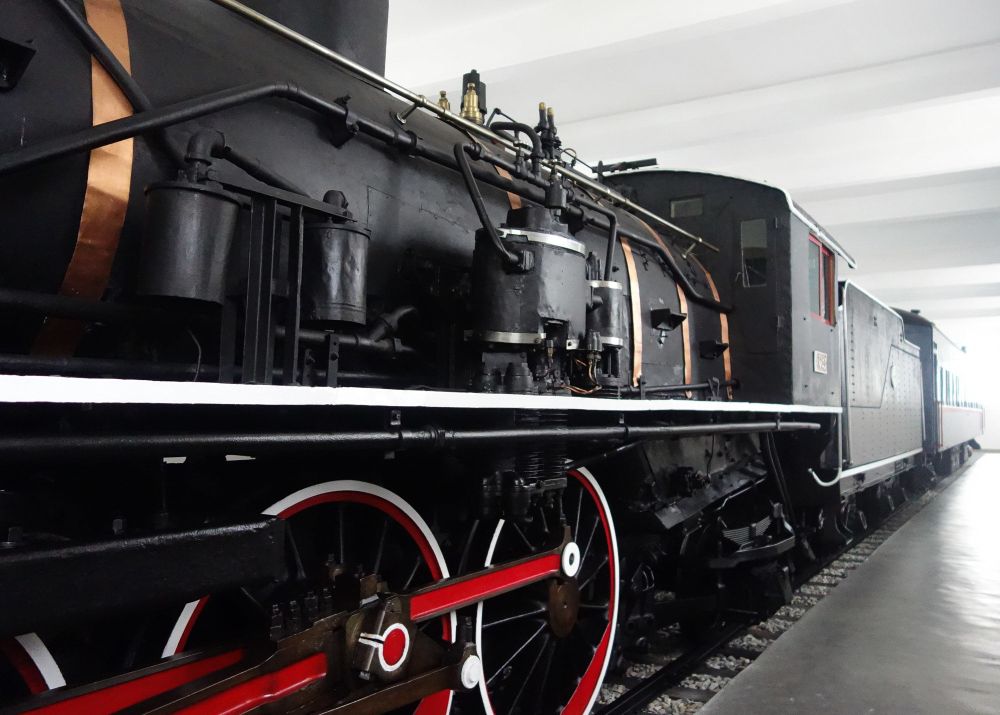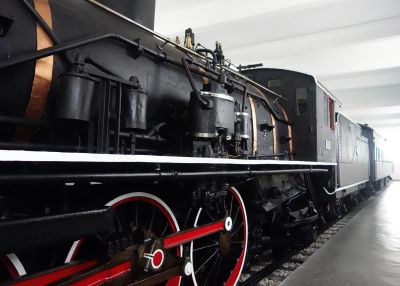

The Wonsan Revolutionary Museum is a significant historical site that offers a deep insight into the revolutionary history of North Korea. This museum houses numerous exhibits and relics related to the anti-Japanese armed struggle and the Korean War. Tourists can explore various rooms dedicated to different periods of the revolutionary struggle, showcasing weaponry, uniforms, and personal belongings of soldiers. The museum also provides detailed accounts of key figures in Korean history, including the leaders of the Kim dynasty. A guided tour through the museum will help you understand the national narrative of perseverance and revolutionary spirit as promoted by the North Korean government. The museum's architecture itself is a reflection of the country's cultural heritage and socialist realism style.
The Old Wonsan Train Station is a historical landmark where visitors can explore the remnants of the past and the city's significance during the war. The station is preserved as it was during the mid-20th century and provides a poignant look at the impact of the conflict on Wonsan's infrastructure. Within the premise, you will find old locomotives and carriages, some of which have been converted into exhibition spaces to narrate the city's role in transportation and logistics during the Korean War. Touring the station, one gets a sense of the strategic importance of Wonsan and its rail connections to the rest of the country. The exterior of the station, with its vintage architectural design, serves as a perfect backdrop for understanding how transportation played a crucial role in the country's history.
Kang Kon Military Academy serves as a monument to North Korea's military education and history. It plays an important role in patriotically educating visitors about the country's military achievements and strategies. The academy is not always open to the public, but when it is, the tour includes a walk through classrooms, training grounds, and dormitories, offering a glimpse into the lives of North Korean military cadets. Exhibitions display the development of military doctrine, famous battles, and the role of the military in North Korean society. Visitors can expect to see a range of military paraphernalia and learn about the revolutionary ideals taught to cadets. The visit to Kang Kon Military Academy is an eye-opening experience into the heavily militarized culture of the country.
The Wonsan Revolutionary Statues are an integral part of the city's landscape and a focal point for visitors aiming to understand North Korea's reverence for its leaders. These statues, often made of bronze, depict various revolutionary heroes and leaders in powerful and inspiring poses. Visitors will notice that the statues are meticulously maintained, reflecting their importance to the citizens and the state. As part of the tour, visitors can lay flowers at the base of the statues, a common practice in showing respect. The statues are not only political symbols but also serve as artistic representations of North Korean ideology and offer a unique opportunity to observe the local customs and the people’s admiration for their historical figures.
The Wonsan Pier stretches into the East Sea and provides visitors with a serene place to walk and enjoy the coastal scenery. The pier is an excellent spot for a leisurely stroll, particularly during sunrise or sunset when the views are spectacular. Along the way, you may encounter locals fishing or simply enjoying the sea breeze. The stroll is an opportunity to take a break from the historically charged surroundings and indulge in the natural beauty of Wonsan’s coastline. While there, visitors can also taste some local seafood sold by vendors, adding a culinary experience to the visit. The relaxed atmosphere at the pier is a stark contrast to the more formal settings of the revolutionary sites.
A revolutionary opera in Wonsan is not just a performance; it's a cultural event that encapsulates the spirit of North Korean history and traditional art forms. The operas often feature stories of heroism and nationalism, reflecting the country’s propaganda narratives. These performances are grandiose, with elaborate costumes, dramatic music, and powerful singing. The themes center around the country's struggle and triumphs, placing emphasis on collective struggle and leadership. Attending a revolutionary opera gives visitors a chance to experience North Korean cultural expression firsthand through an art form held in high esteem. It's also a way to see how the state infuses art with political messaging.
Jangdok Islet offers a peaceful hiking spot and panoramic views for those interested in the natural wonders around Wonsan. The hike to Jangdok Islet allows visitors to immerse themselves in the areas less traveled by most tourists. The islet is accessible via a short walk or drive from the mainland, followed by a hike, depending on where you begin. Although Jangdok is not directly tied to the revolutionary theme, it provides a beautiful natural setting where one can ponder the historic events that took place in the region. The top of the islet presents a perfect vantage point for photography enthusiasts and those looking to capture the beauty of the Eastern Korean coastline.
Wonsan Agricultural University can be an interesting stop for those curious about the educational system and agricultural practices in North Korea. While it might not routinely offer tours for international visitors, on special occasions, it opens its doors to showcase the academic environment and research in agricultural science. The fields and demonstration plots serve as practical learning sites for students, and visitors can observe a variety of farming techniques used in the region. It presents an opportunity to learn about the challenges faced in food production and the solutions implemented by the nation. The visit can be enlightening for those interested in rural development and sustainable farming.
